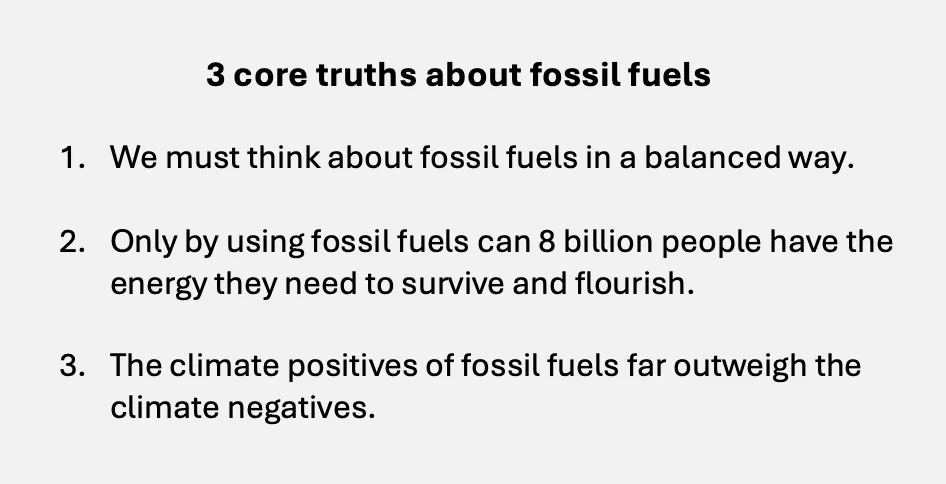Originally published: August 6, 2024
Over the last 2 weeks I shared Energy Sound Bites to support two core truths about fossil fuels:
1) [We must think about fossil fuels in a balanced way.](https://energytalkingpoints.com/energy-sound-bites-on-fossil-fuels-part-1/)
2) Only by using fossil fuels can 8 billion people have the energy they need to survive and flourish.
Today, I’ll share Energy Sound Bites to support the third core truth: The climate positives of fossil fuels far outweigh the climate negatives.
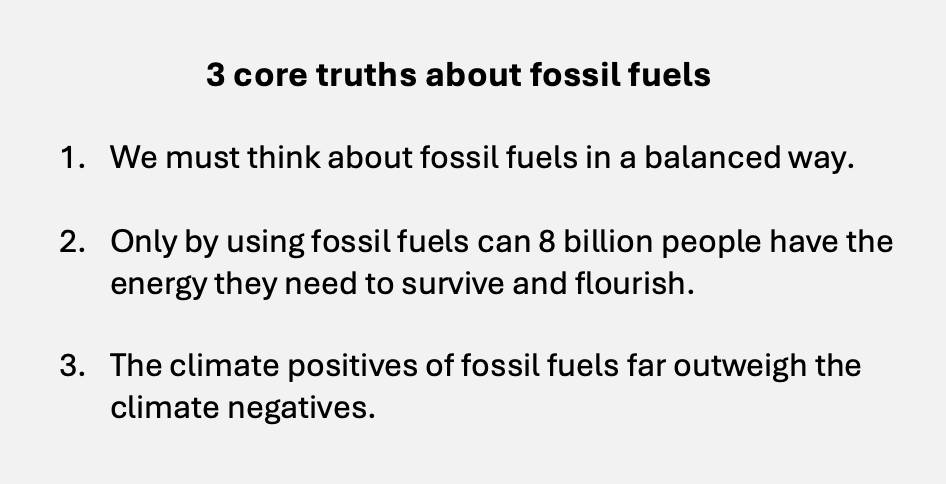
As a reminder, the goal of Energy Sound Bites is to distill key facts and insights about energy, environmental, and climate issues into a form—100 characters or less—that’s short enough to remember and repeat whenever you need them.
The climate positives of fossil fuels far outweigh the climate negatives
-
When looking at the climate effects of fossil fuels, we must look at both negatives and positives.
- We can’t just look at how warming increases heat waves, we also must look at lives saved from cold.
-
Fossil fuels’ biggest climate positive is the ability to master climate danger.
- Fossil fueled cooling allows us to dramatically reduce danger from heat.
- Fossil fueled heating allows us to dramatically reduce danger from cold.
- Fossil fueled irrigation allows us to dramatically reduce danger from drought.
- Fossil fueled evacuation systems allow us to dramatically reduce danger from storms.
-
By powering climate mastery fossil fuels can actually neutralize many of their climate challenges.
- If fossil fuels increased drought 10% they could overwhelm that via irrigation and crop transport.
-
Fossil fueled climate mastery has easily overwhelmed any climate challenges so far.
- Fossil fueled climate mastery has helped us become safer than ever from climate.
- The climate death rate is 98% less than it was 100 years ago.1
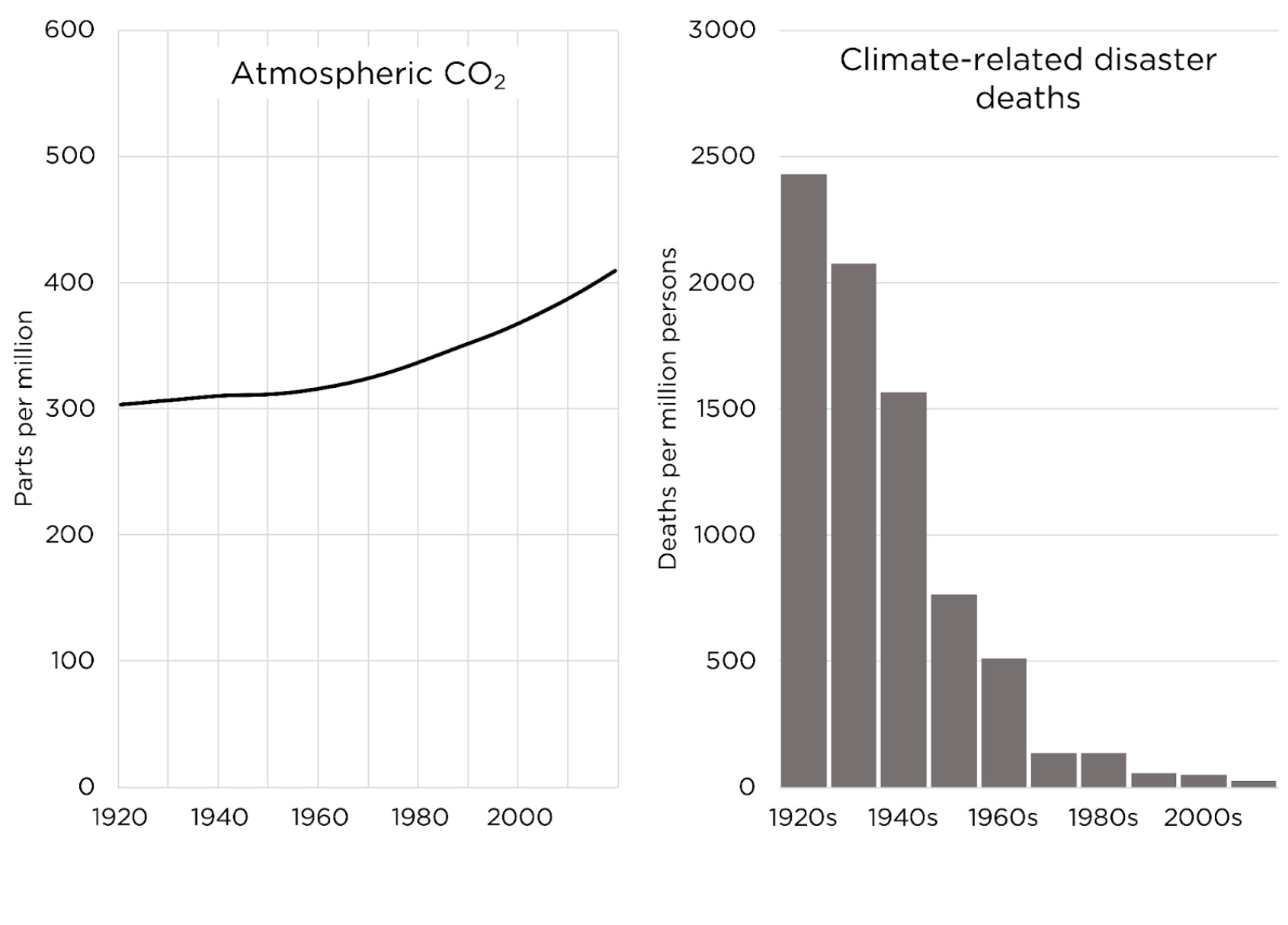
- The drought death rate is 99% less than it was 100 years ago.2
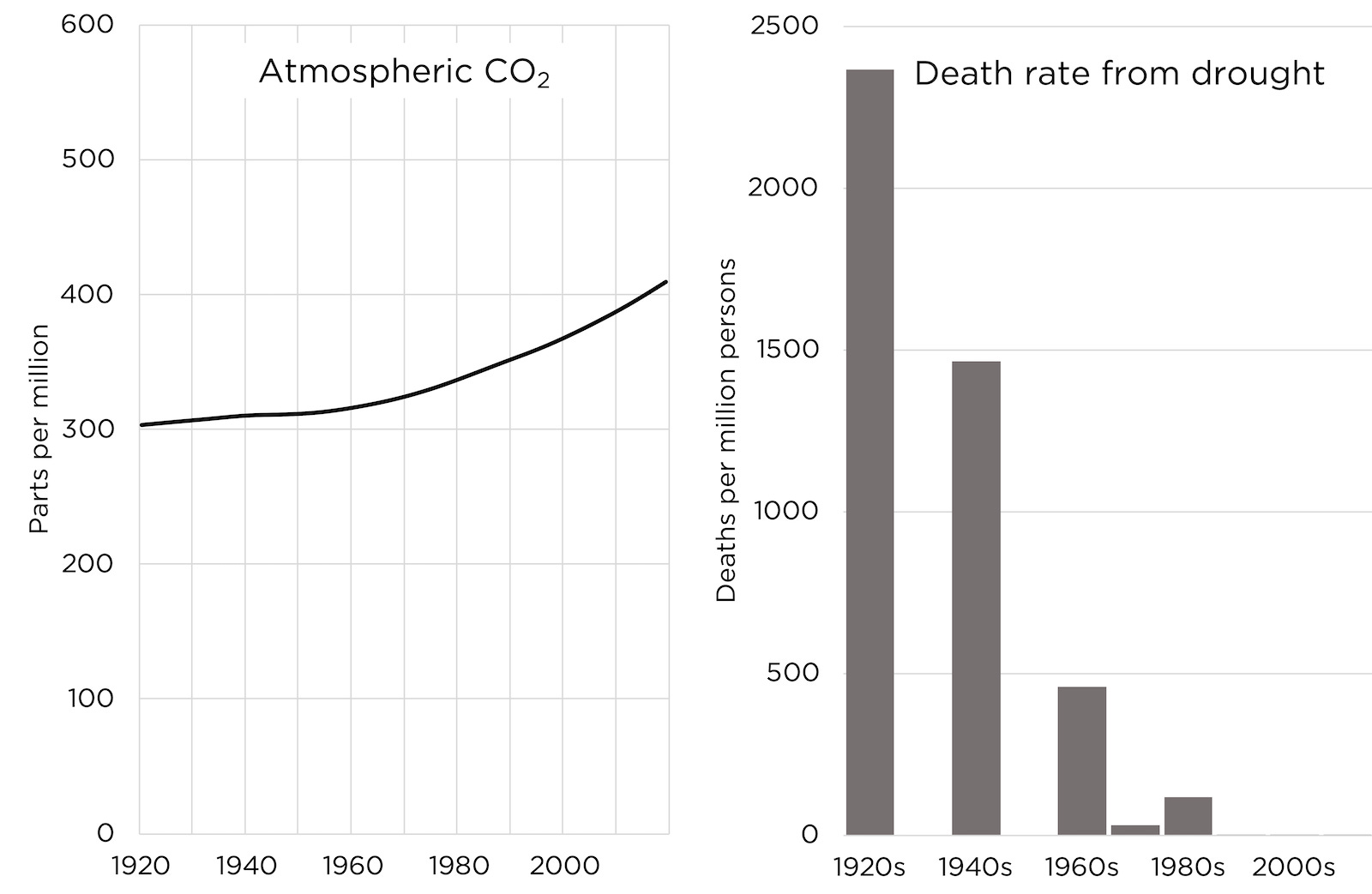
- Climate has warmed about 1° C, a mild and manageable amount, over the last 170 years.3
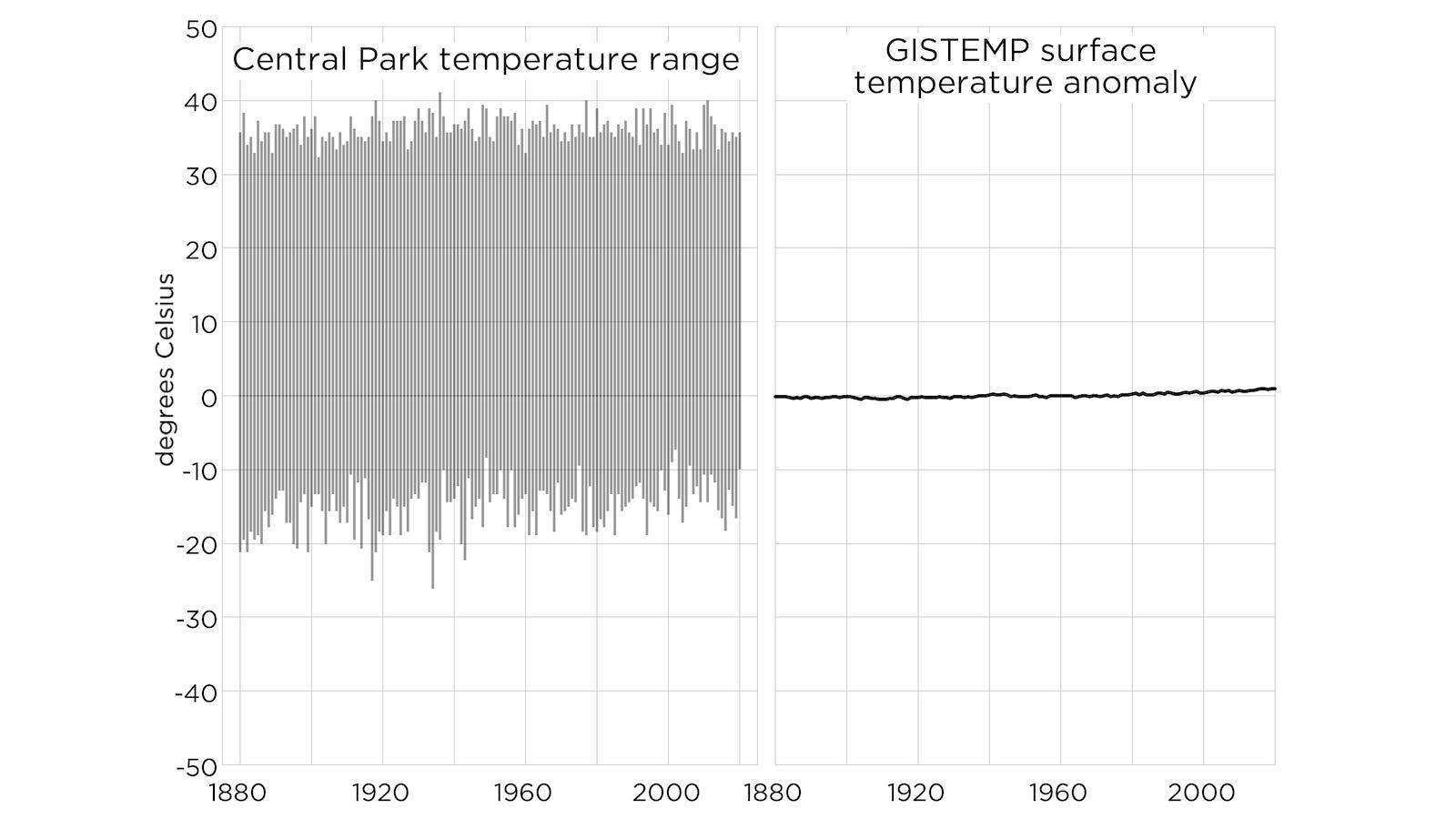
- Other climate effects are hard to discern, but in any case they are overwhelmed by mastery.
- At 2°C warming, hurricanes are expected to be less frequent and between 1-10% more intense.4
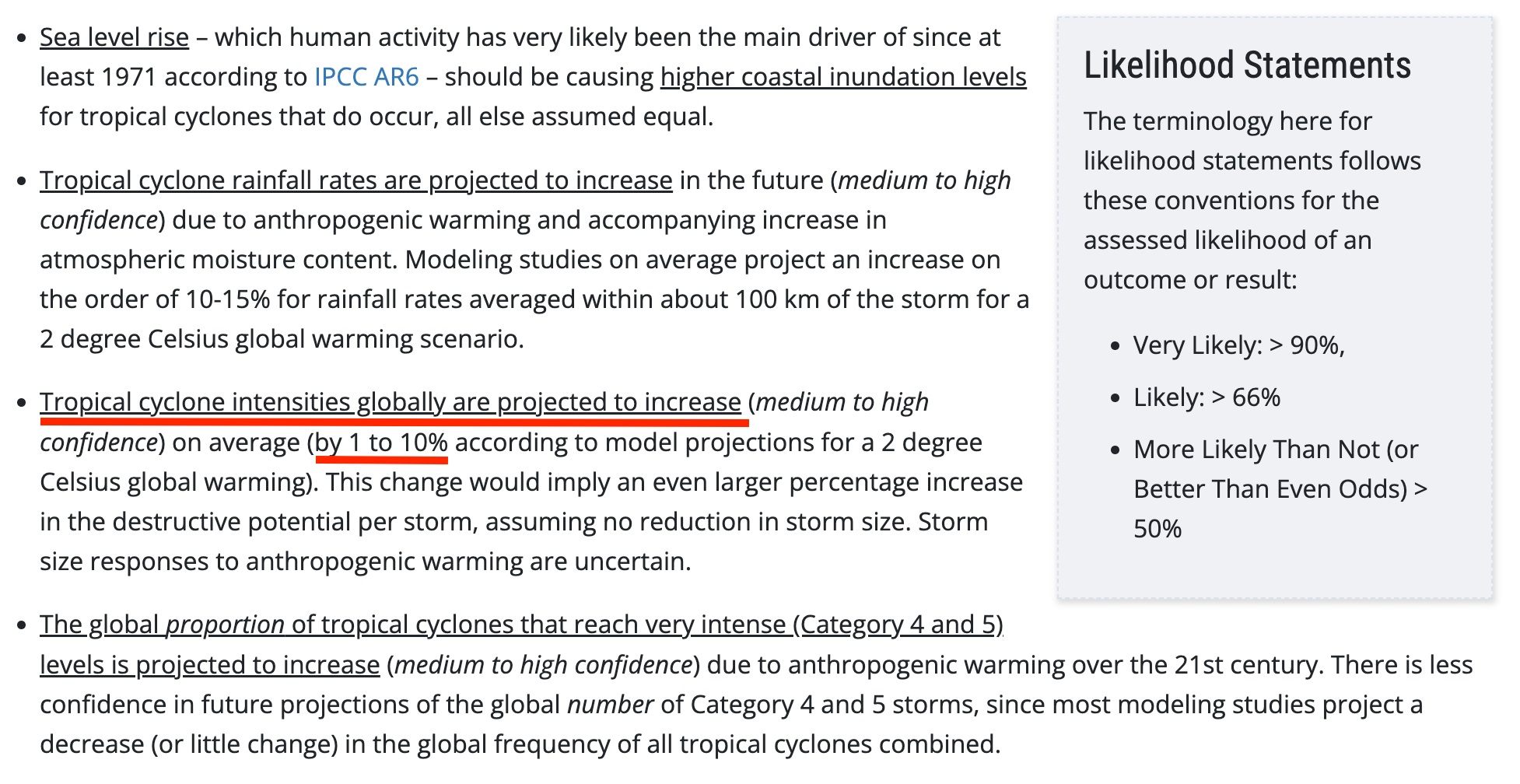
- Fire danger, which depends mainly on mastery, is down from 20 years ago and far down than 100 years ago.5
- GDP-adjusted climate-related damages are flat despite many incentives for them to go up.6
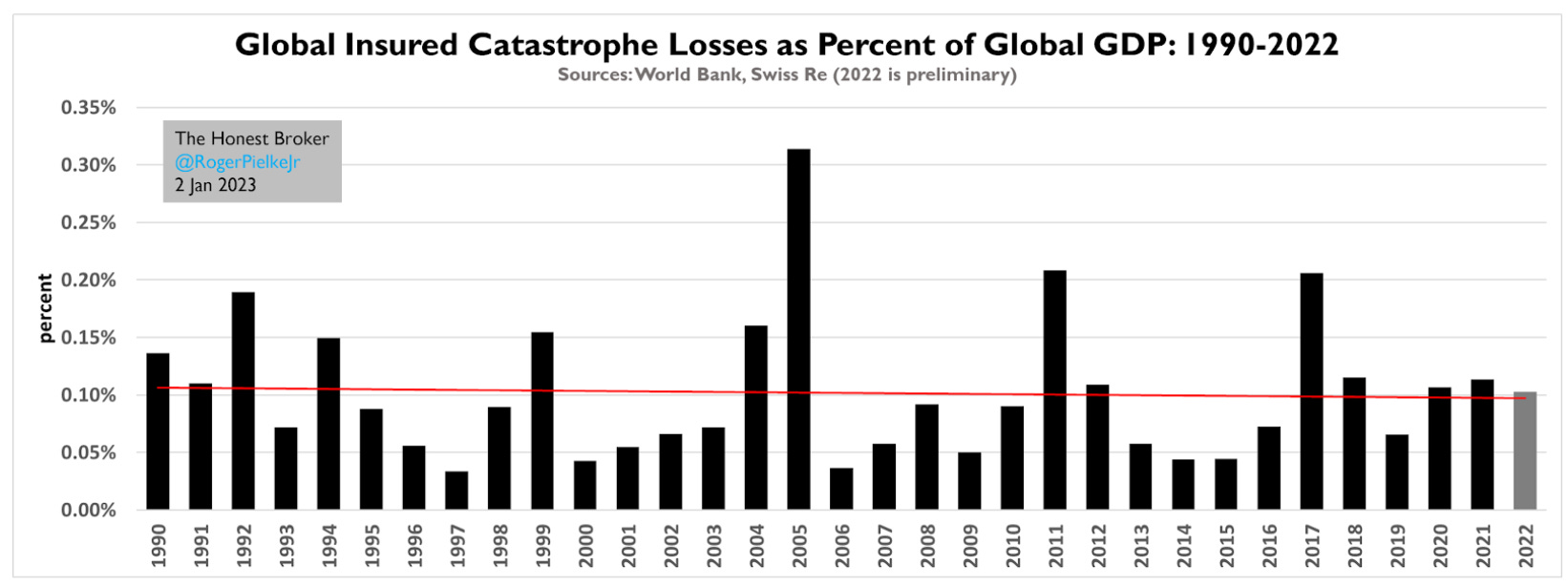
-
Nothing in mainstream climate science suggests climate challenges we can’t master
- Even though Earth has gotten ~1°C warmer, more people still die from cold than heat (even in India)!
- While we’re taught to fear heat-related death, cold-related death is a far bigger problem.
- More people die of cold than of heat on every continent.
- Near-term warming is expected to decrease temperature-related mortality.7
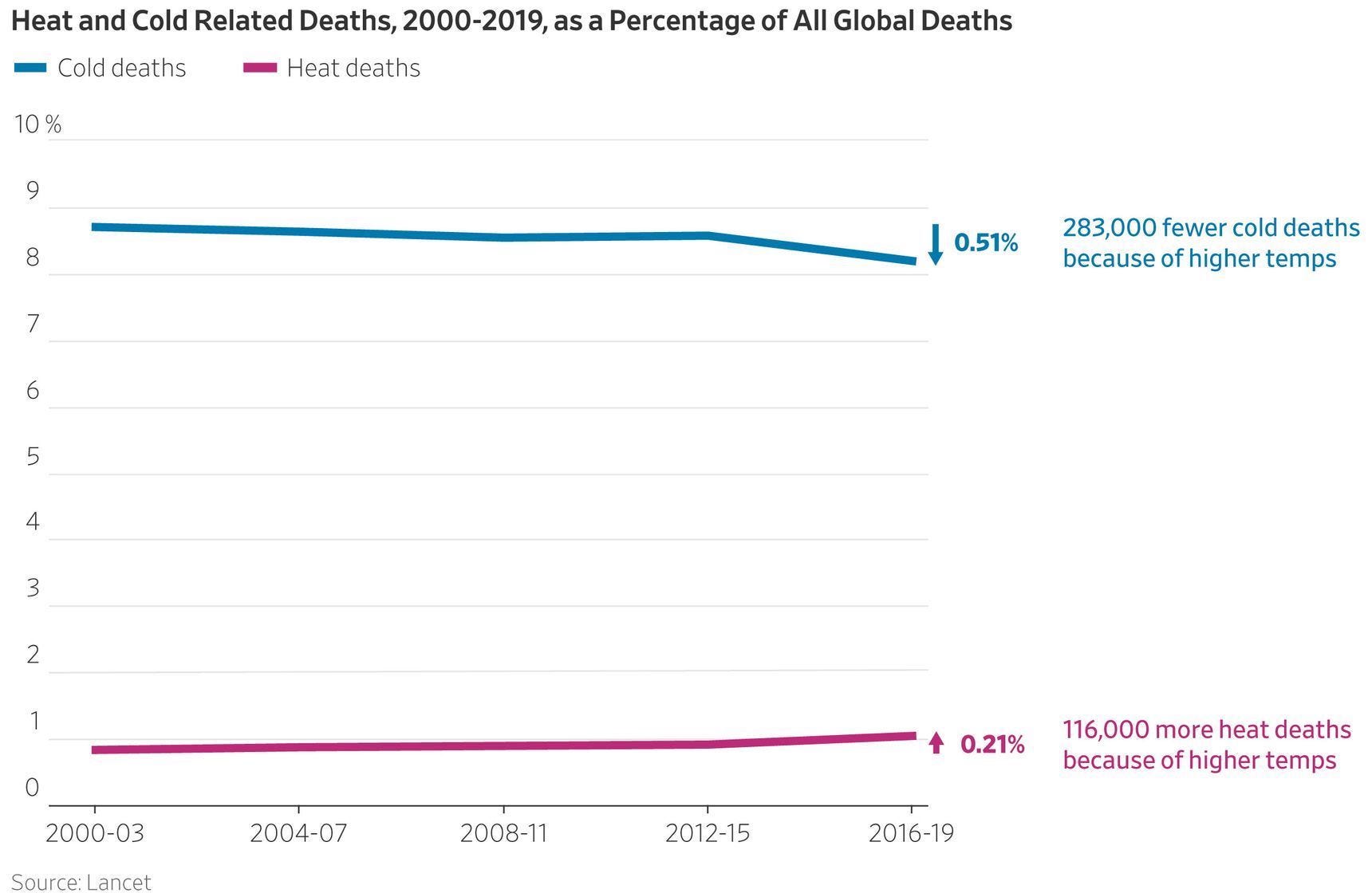
- Warming from CO2 is concentrated in the coldest parts of the world during the coldest times.
- While we’re taught to think of warming as “global,” in fact it is concentrated in colder places.
- Mainstream climate science says warming will be concentrated in colder places (Northern latitudes).
- Mainstream climate science says warming will be concentrated at colder times (nighttime).
- Mainstream climate science says warming will be concentrated during colder seasons (winter).8
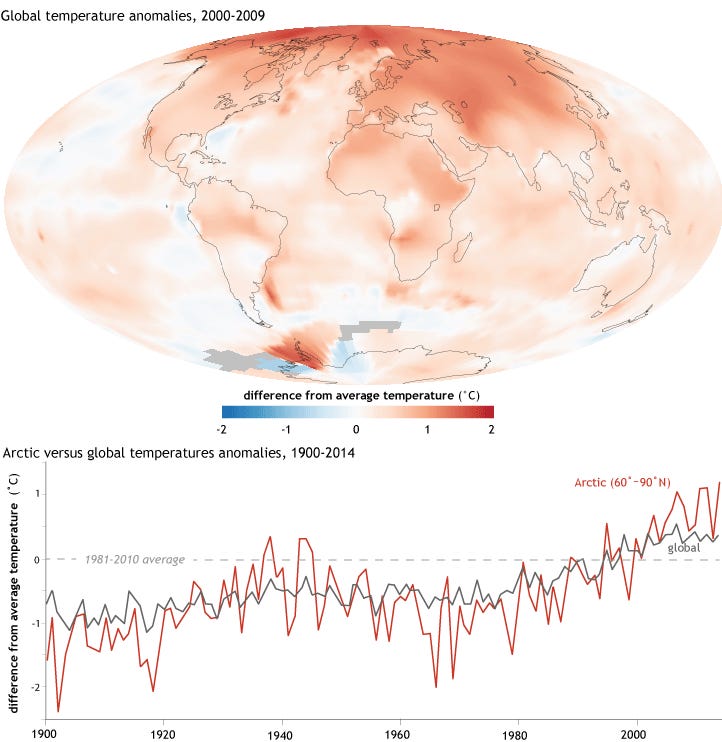
- Even though Earth has gotten ~1°C warmer, more people still die from cold than heat (even in India)!
-
Rising CO2 leads to diminishing warming.
- While we’re taught warming will accelerate as CO2 levels rise, this contradicts mainstream science.
- The “greenhouse effect” of CO2 is a diminishing effect, with additional CO2 leading to less warming.
- Even the UN’s most extreme scenarios show warming leveling off as CO2 levels rise.9
-
The IPCC projects impacts from warming that would be masterable with fossil fuels.
- The UN IPCC is a catastrophizing organization—but even it projects masterable warming impacts.
- The most plausible danger is rising sea levels, but extreme UN projections are just 3 ft / 100 yrs.10

- We already have 100 million people living below high-tide sea level.11
-
If we destroy the freedom to use fossil fuels, climate danger will get worse along with everything else.
- With “net zero,” climate danger of all types will dramatically increase.
- With “net zero,” CO2 levels will rise more slowly, but billions of lives will be ruined.
-
If we protect all energy freedom everything will get better, including climate mastery, and we’ll innovate alternatives faster.
- With energy freedom, we’ll get better at mastering climate danger, natural or manmade.
- With energy freedom, CO2 levels will rise but life will continue to get better and better.
- With energy freedom, the rate at which alternatives are cost-competitive will accelerate.
- Thus, energy freedom is the only moral and practical way to reduce CO2 emissions long term.
Michelle Hung contributed to this piece.
References
-
UC San Diego - The Keeling Curve
For every million people on earth, annual deaths from climate-related causes (extreme temperature, drought, flood, storms, wildfires) declined 98%--from an average of 247 per year during the 1920s to 2.5 per year during the 2010s.
Data on disaster deaths come from EM-DAT, CRED / UCLouvain, Brussels, Belgium – www.emdat.be (D. Guha-Sapir).
Population estimates for the 1920s from the Maddison Database 2010, the Groningen Growth and Development Centre, Faculty of Economics and Business at University of Groningen. For years not shown, population is assumed to have grown at a steady rate.
Population estimates for the 2010s come from World Bank Data.
-
UC San Diego - The Keeling Curve
For every million people on earth, annual deaths from climate-related causes (extreme temperature, drought, flood, storms, wildfires) declined 98%--from an average of 247 per year during the 1920s to 2.5 per year during the 2010s.
Data on disaster deaths come from EM-DAT, CRED / UCLouvain, Brussels, Belgium – www.emdat.be (D. Guha-Sapir).
Population estimates for the 1920s from the Maddison Database 2010, the Groningen Growth and Development Centre, Faculty of Economics and Business at University of Groningen. For years not shown, population is assumed to have grown at a steady rate.
Population estimates for the 2010s come from World Bank Data.
-
NASA - GISS Surface Temperature Analysis
NOAA National Centers for Environmental Information - Daily Summaries Station Details, NY, Central Park↩
-
Roger Pielke, jr. - What the media won't tell you about ... Wildfires
-
Bjorn Lomborg - Climate Change Saves More Lives Than You’d Think
-
NOAA - Climate change rule of thumb: cold "things" warming faster than warm things↩
-
See: Figure 4.40 in IPCC, 2021: Chapter 4. In: Climate Change 2021: The Physical Science Basis.↩
-
‘The actual research on which the New York Times article is based mentions in its introduction that “coastal defenses are not considered” in its approach. That’s fine for an academic paper, but it’s ludicrous for the media to use its findings to produce claims of “20 million people underwater,” or for campaigners to suggest that this gives us reason to all become “alarmist.” The study shows that today, 110 million people are “underwater” regularly. In reality, almost every one of them is well protected. The real story here is the triumph of ingenuity and adaptation.’
Bjorn Lomborg - False Alarm, p. 22↩
